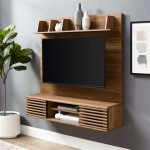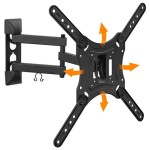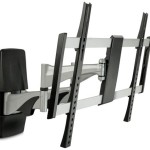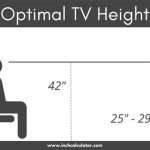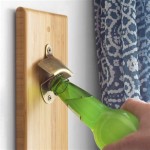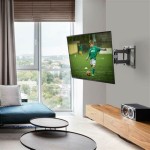Selecting the Right TV Wall Mount for a 27-Inch Television
The selection of a television wall mount is a critical decision when optimizing viewing experience and maximizing space. For a 27-inch television, numerous mounting options exist, each offering distinct advantages and disadvantages. Understanding the specifications, features, and installation requirements of various TV wall mounts is paramount for making an informed purchase. This article provides a comprehensive overview of factors to consider when selecting a TV wall mount specifically designed for a 27-inch television.
The primary purpose of a TV wall mount is to securely affix a television to a wall. This offers several benefits compared to using a traditional TV stand. It frees up floor space, creating a cleaner and more organized environment. Wall mounting also improves viewing angles by allowing the television to be positioned at an optimal height and angle. Furthermore, it provides a measure of security against accidental tipping, particularly valuable in households with children or pets.
Before exploring the different types of TV wall mounts specifically suited for a 27-inch television, it is essential to understand the key specifications that govern compatibility. These specifications primarily relate to the television's Video Electronics Standards Association (VESA) mounting standard and the weight capacity of the mount. Ignoring these specifications can lead to improper installation and potential damage to the television or the wall.
VESA, or Video Electronics Standards Association, is a standard that defines the distance in millimeters between the four mounting holes on the back of a television. The VESA standard ensures compatibility between televisions and wall mounts. A 27-inch television typically adheres to a smaller VESA standard, often 75x75 mm or 100x100 mm. It is imperative to consult the television's user manual or the manufacturer's website to determine the correct VESA measurement before purchasing a wall mount. Purchasing a mount with an incompatible VESA pattern renders it unusable.
Weight capacity is another crucial factor. The selected wall mount must be capable of supporting the weight of the 27-inch television. The television's weight can be found in the user manual or on the manufacturer's website. It is crucial to select a mount with a weight capacity that exceeds the television's weight. This provides a safety margin and ensures the mount will not be stressed beyond its design limitations. Overloading a wall mount can lead to structural failure, potentially resulting in damage to the television and the wall, and posing a safety hazard.
Understanding Different Types of TV Wall Mounts
Several types of TV wall mounts are available, each designed for specific applications and offering differing levels of adjustability. The most common types include fixed mounts, tilting mounts, and full-motion mounts. Understanding the characteristics of each type is essential for selecting the most appropriate mount for a given viewing environment.
Fixed mounts are the simplest and most affordable type of TV wall mount. They hold the television flush against the wall, offering a low-profile appearance. Fixed mounts are ideal for situations where the viewing angle is already optimal and does not require adjustment. These mounts are typically easy to install and are suitable for situations where minimal movement and adjustability are required. However, they offer no flexibility for tilting or swiveling the television.
Tilting mounts allow the television to be tilted up or down, typically by a few degrees. This is useful for reducing glare from overhead lighting or for improving the viewing angle when the television is mounted higher than eye level. Tilting mounts offer a compromise between the simplicity of a fixed mount and the versatility of a full-motion mount. They provide some adjustability while maintaining a relatively low profile. However, they do not allow for swiveling or extending the television away from the wall.
Full-motion mounts, also known as articulating mounts, offer the greatest degree of flexibility. They allow the television to be tilted, swiveled, and extended away from the wall. This makes them ideal for situations where the viewing angle needs to be adjusted frequently or where the television needs to be viewed from multiple locations in the room. Full-motion mounts are more complex to install and are typically more expensive than fixed or tilting mounts. They also tend to protrude further from the wall than other types of mounts. However, the increased flexibility they offer can be invaluable in certain situations.
For a 27-inch television, all three types of mounts can be suitable depending on the specific needs of the user and the characteristics of the viewing environment. If the viewing angle is consistently optimal and minimal adjustability is required, a fixed mount provides a secure and cost-effective solution. If glare reduction or minor vertical adjustments are needed, a tilting mount offers a good compromise. If maximum flexibility and adjustability are desired, a full-motion mount is the best choice.
Factors to Consider During Installation
Proper installation of the TV wall mount is crucial for ensuring the safety and stability of the television. Incorrect installation can lead to the mount failing, potentially causing damage to the television and the wall, and creating a safety hazard. Therefore, it is essential to follow the manufacturer's instructions carefully and to take appropriate precautions during the installation process.
The first step in the installation process is to locate a suitable stud in the wall. Wall studs are vertical framing members that provide structural support. Attaching the TV wall mount to a stud is essential for ensuring that it can support the weight of the television. Stud finders are electronic devices that can detect the location of studs behind drywall. Alternatively, studs can be located by tapping on the wall and listening for a solid sound. Once a stud is located, it should be verified using a nail or a small drill bit. If a stud cannot be located in the desired mounting location, alternative mounting solutions, such as using drywall anchors or mounting to a concrete wall, may be necessary.
Drywall anchors are designed to provide support when mounting to drywall without a stud. However, they are generally not recommended for mounting heavy objects, such as televisions, as they may not provide sufficient support. Mounting to a concrete wall requires specialized hardware and techniques. Concrete anchors must be used to securely attach the mount to the concrete. This type of installation requires specialized tools, such as a hammer drill. It is recommended to consult a professional installer if mounting to concrete.
Once the stud has been located, the wall mount can be attached to the wall. The manufacturer's instructions should be followed carefully to ensure that the mount is properly aligned and securely fastened. The screws used to attach the mount to the stud should be of sufficient length and diameter to provide adequate holding power. It is also important to ensure that the screws are tightened properly, but not over-tightened, which can strip the threads in the wood. After the mount is attached to the wall, the television can be attached to the mount. Again, the manufacturer's instructions should be followed carefully to ensure that the television is properly aligned and securely fastened. Once the television is attached, it should be tested to ensure that it is stable and secure.
Leveling the television is vital for aesthetic appeal and optimal viewing. A level tool should be used to ensure the mount is perfectly horizontal before securing it to the wall. Adjustments may be necessary after initial mounting to achieve perfect alignment. Cable management is another important consideration. TV wall mounts often include features for concealing cables, such as cable channels or covers. Utilizing these features helps to create a cleaner and more organized appearance.
Evaluating Mount Features and Aesthetics
Beyond the fundamental aspects of VESA compatibility, weight capacity, and mount type, additional features and aesthetic considerations play a role in selecting the ideal TV wall mount. These factors contribute to both the functionality and visual appeal of the installation. Evaluating these aspects leads to a mounting solution that seamlessly integrates with the viewing environment.
Some wall mounts offer advanced features such as integrated cable management systems. These systems typically consist of channels or covers that conceal cables, preventing them from dangling and creating a cluttered appearance. Integrated cable management is particularly beneficial for full-motion mounts, where the cables need to move freely with the television. Another useful feature is a built-in level, which simplifies the installation process and ensures that the television is mounted horizontally.
The aesthetic design of the wall mount also contributes to the overall visual appeal of the installation. Wall mounts are available in a variety of finishes, such as black, silver, and white, to complement the television and the surrounding decor. The profile of the mount, meaning how far it protrudes from the wall, is another aesthetic consideration. Fixed mounts have the lowest profile, while full-motion mounts have the highest. The choice of profile depends on the desired look and the amount of space available.
For enhanced safety, especially in households with children, consider mounts with locking mechanisms. These mechanisms prevent accidental dislodging of the television from the mount. Inspect the build quality of the mount. Sturdy construction and durable materials ensure longevity and reliable support for the television. Powder-coated steel is a common and robust material for TV wall mounts.
Ultimately, selecting the right TV wall mount for a 27-inch television involves careful consideration of several factors, including VESA compatibility, weight capacity, mount type, installation requirements, features, and aesthetics. By thoroughly evaluating these aspects, individuals can ensure they choose a mount that provides a secure, functional, and visually appealing solution for their specific viewing environment.

Tv Wall Mount Full Motion Tilt Swivel 13 27 Inch Led Lcd Bracket Vesa 75 100

Tv Wall Mount Full Motion Tilt Swivel 13 27 Inch Led Lcd Bracket Vesa 75 100

Tilt Swivel Tv Bracket For 13 27 Tvs Vonhaus

27 37 Inch Slimline Tilt Lcd Led Tv Monitor Wall Mount Bracket Black Plb118s Bl Selby

Swelix Dy820l Full Motion Adjustable Ultra Slim 27 Mm Tv Wall Mount For 37 100 Inch Flat Screens Space Saving Design Shelves 65 And Sam Sung Frame

Invision Fx100 Tv Bracket Monitor Arm For 17 27 Inch Screens With Vesa 75x75mm 100x100mm

14 27 Inch Adjustable Tv Monitor Wall Mount Bracket For Screens 180 Tilt Swivel And Rotation Maximum Viewing Comfort Homenest Lk

Wall Mount Bracket For 14 27 Inch Pc Monitor Tft Lcd Led Plasma Oled F Swiftech

Monitor Wall Mount Gas Strut 17 35 Inches Flexi Lcd Led Tvs F150 Gadget Wagon

F 03 14 27 Inch Tv Wall Mount Bracket With Arme Daraz Lk

